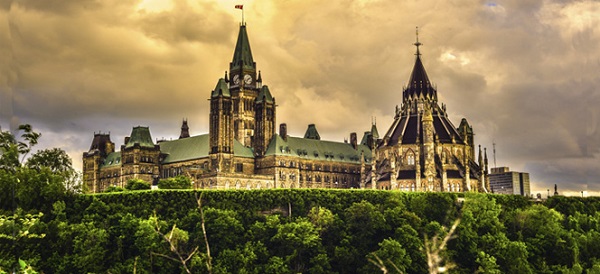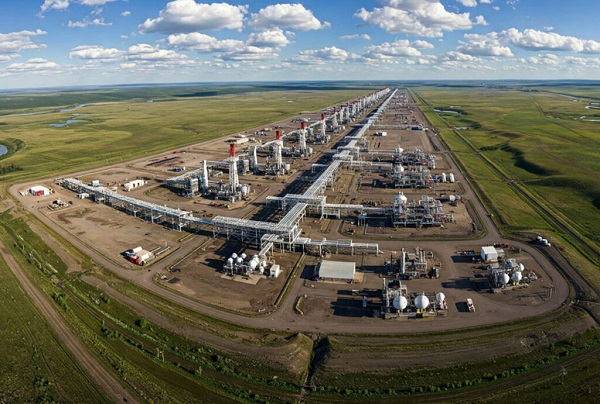Business
Median wages and salaries lower in every Canadian province than in every U.S. state

From the Fraser Institute
There’s a growing consensus among economists that the federal government and several provincial governments over the past decade have not enacted enough policies that encourage economic growth. Consequently, Canadians are getting poorer relative to residents of other countries including the United States. In particular, their ability to purchase essential goods and services such as housing and food—in other words, their standard of living—is declining relative to our neighbours to the south.
In fact, according to our new study, among the 10 provinces and 50 U.S. states, median employment earnings—that is, wages and salaries— in 2022 (the latest year of available data) were lowest in the four Atlantic provinces, followed by Manitoba, Saskatchewan, Quebec, Ontario, British Columbia and Alberta. So, the median employment earnings of workers were lower in every Canadian province than in every U.S. state.
Were Canadian provinces always in the basement? Pretty much. In 2010, while only 12 U.S. states reported higher median employment earnings than Alberta, the other nine Canadian provinces ranked among the bottom 10 places. However, the important point is that from 2010 to 2022, Canadian provinces have fallen even further behind as many low-ranking U.S. states substantially improved.
In 2010, the per-worker earnings gap (in 2017 Canadian dollars) between Louisiana, a middle-ranking state, and the nine lowest-ranked Canadian provinces varied from $4,650 (in Saskatchewan) to $15,661 (Prince Edward Island). By 2022, a typical mid-ranking state such as Tennessee was out-earning all provinces by a range of $6,770 (in Alberta) to $16,955 (P.E.I.). In other words, by 2022, not only were workers in all U.S. states out-earning workers in all Canadian provinces, the gap had grown.
Another example—Alberta and Texas are the two largest oil-producing jurisdictions in their respective countries, yet Albertans, who out-earned Texans in 2010, saw their lead of $3,423 per worker become a deficit of $5,254 by 2022.
It’s a similar story for B.C. and Washington, which are geographically proximate and have similar-sized populations. While B.C. experienced strong growth in median employment earnings per worker over this period, it still lost ground relative to Washington—the gap grew from $10,879 in 2010 to $11,311 by 2022.
The change between Ontario and Michigan is even more striking. Again, they are geographic neighbours, have similar-sized populations and share a large auto sector, with Michigan’s lead over Ontario growing from $2,955 per worker in 2010 to $8,661 by 2022. The trends are similar when comparing Saskatchewan to North Dakota or the Atlantic provinces to the New England states; the gaps have only grown larger.
So, why should Canadians care?
Of course, everybody wants to make more money, so Canadians should want to know why workers in Mississippi and Louisiana make more than workers here at home. But there’s also a broader problem—people and capital can move relatively freely across the Canada-U.S. border, meaning this growing divergence in employment earnings has significant ramifications for the Canadian economy.
It could spur the ongoing migration of highly productive individuals, including high-skilled immigrants, who choose to move south. And encourage domestic and foreign firms to invest in the U.S. rather than in Canada. If these trends continue, they will exacerbate the earnings gaps between the two countries and potentially make Canada an economic backwater relative to the U.S. There’s also a significant risk these trends could worsen if the next U.S. administration increases tariffs on Canadian exports to the U.S., effectively abrogating the North American free trade agreement.
Clearly, to mitigate this risk and reverse the ongoing divergence in employment earnings—which largely determine living standards—between Canada and the U.S., the federal and provincial governments should implement bold and sweeping growth-oriented policies to make the Canadian economy more competitive. When Canada is more attractive to business investment, high-skilled workers and entrepreneurs, all workers will reap the rewards.
Authors:
2025 Federal Election
Alcohol tax and MP pay hike tomorrow (April 1)

The Canadian Taxpayers Federation is calling on all party leaders to stop a pair of bad policies that are scheduled to happen automatically on April 1: pay raises for members Parliament and another alcohol tax increase.
“Party leaders owe taxpayers answers to these two questions: Why do you think you deserve a pay raise and why should Canadians pay higher taxes on beer and wine?” said Franco Terrazzano, CTF Federal Director. “Politicians don’t deserve a raise while millions of Canadians are struggling.
“And the last thing Canadians need is another tax hike when they pour a cold one or uncork a bottle with that special someone.”
MPs give themselves pay raises each year on April 1, based on the average annual increase in union contracts with corporations with 500 or more employees.
The CTF estimates tomorrow’s pay raise will amount to an extra $6,200 for backbench MPs, $9,200 for ministers and $12,400 for the prime minister, based on contract data published by the federal government.
After tomorrow’s pay raise, backbench MPs will receive a $209,300 annual salary, according to CTF estimates. A minister will collect $309,100 and the prime minister will take home $418,600.
Meanwhile, the alcohol escalator automatically increases excise taxes on beer, wine and spirits every year on April 1, without a vote in Parliament. Alcohol taxes will increase by two per cent tomorrow, costing taxpayers about $40 million this year, according to Beer Canada estimates.
The alcohol escalator tax has cost taxpayers more than $900 million since it was imposed in 2017, according to Beer Canada estimates.
“Politicians are padding their pockets on the same day they’re raising beer taxes and that’s wrong,” Terrazzano said. “If party leaders want to prove they care about taxpayers, they should stop the MP pay raises.
“And if party leaders care about giving Canadian brewers, distillers and wineries a fighting chance against tariffs, it’s time to stop hitting them with alcohol tax hikes year after year.”
The CTF released Leger polling showing 79 per cent of Canadians oppose tomorrow’s MP pay raise.
2025 Federal Election
Poilievre To Create ‘Canada First’ National Energy Corridor

From Conservative Party Communications
Poilievre will create the ‘Canada First’ National Energy Corridor to rapidly approve & build the infrastructure we need to end our energy dependence on America so we can stand up to Trump from a position of strength.
Conservative Leader Pierre Poilievre announced today he will create a ‘Canada First’ National Energy Corridor to fast-track approvals for transmission lines, railways, pipelines, and other critical infrastructure across Canada in a pre-approved transport corridor entirely within Canada, transporting our resources within Canada and to the world while bypassing the United States. It will bring billions of dollars of new investment into Canada’s economy, create powerful paycheques for Canadian workers, and restore our economic independence.
“After the Lost Liberal decade, Canada is poorer, weaker, and more dependent on the United States than ever before,” said Poilievre. “My ‘Canada First National Energy Corridor’ will enable us to quickly build the infrastructure we need to strengthen our country so we can stand on our own two feet and stand up to the Americans.”
In the corridor, all levels of government will provide legally binding commitments to approve projects. This means investors will no longer face the endless regulatory limbo that has made Canadians poorer. First Nations will be involved from the outset, ensuring that economic benefits flow directly to them and that their approval is secured before any money is spent.
Between 2015 and 2020, Canada cancelled 16 major energy projects, resulting in a $176 billion hit to our economy. The Liberals killed the Energy East pipeline and passed Bill C-69, the “No-New-Pipelines” law, which makes it all but impossible to build the pipelines and energy infrastructure we need to strengthen the Canadian economy. And now, the PBO projects that the ‘Carney cap’ on Canadian energy will reduce oil and gas production by nearly 5%, slash GDP by $20.5 billion annually, and eliminate 54,400 full-time jobs by 2032. An average mine opening lead time is now nearly 18 years—23% longer than Australia and 38% longer than the US. As a result of the Lost Liberal Decade, Canada now ranks 23rd in the World Bank’s Ease of Doing Business Index for 2024, a seven-place drop since 2015.
“In 2024, Canada exported 98% of its crude oil to the United States. This leaves us too dependent on the Americans,” said Poilievre. “Our Canada First National Energy Corridor will get us out from under America’s thumb and enable us to build the infrastructure we need to sell our natural resources to new markets, bring home jobs and dollars, and make us sovereign and self-reliant to stand up to Trump from a position of strength.”
Mark Carney’s economic advice to Justin Trudeau made Canada weaker while he and his rich friends made out like bandits. While he advised Trudeau to cancel Canadian energy projects, his own company spent billions on pipelines in South America and the Middle East. And unlike our competitors Australia and America, which work with builders to get projects approved, Mark Carney and Steven Guilbeault’s radical “keep-it-in-the-ground” ideology has blocked development, killed jobs, and left Canada dependent on foreign imports.
“The choice is clear: a fourth Liberal term that will keep our resources in the ground and keep us weak and vulnerable to Trump’s threats, or a strong new Conservative government that will approve projects, build an economic fortress, bring jobs and dollars home, and put Canada First—For a Change.”
-

 Business1 day ago
Business1 day agoDOGE discovered $330M in Small Business loans awarded to children under 11
-

 2025 Federal Election1 day ago
2025 Federal Election1 day agoThe High Cost Of Continued Western Canadian Alienation
-

 COVID-191 day ago
COVID-191 day ago17-year-old died after taking COVID shot, but Ontario judge denies his family’s liability claim
-

 Economy2 days ago
Economy2 days agoSolar and Wind Power Are Expensive
-

 Business2 days ago
Business2 days agoWhy a domestic economy upgrade trumps diversification
-

 Daily Caller1 day ago
Daily Caller1 day agoCover up of a Department of Energy Study Might Be The Biggest Stain On Biden Admin’s Legacy
-

 Economy2 days ago
Economy2 days agoClearing the Path: Why Canada Needs Energy Corridors to Compete
-

 Business2 days ago
Business2 days agoTariff-driven increase of U.S. manufacturing investment would face dearth of workers









